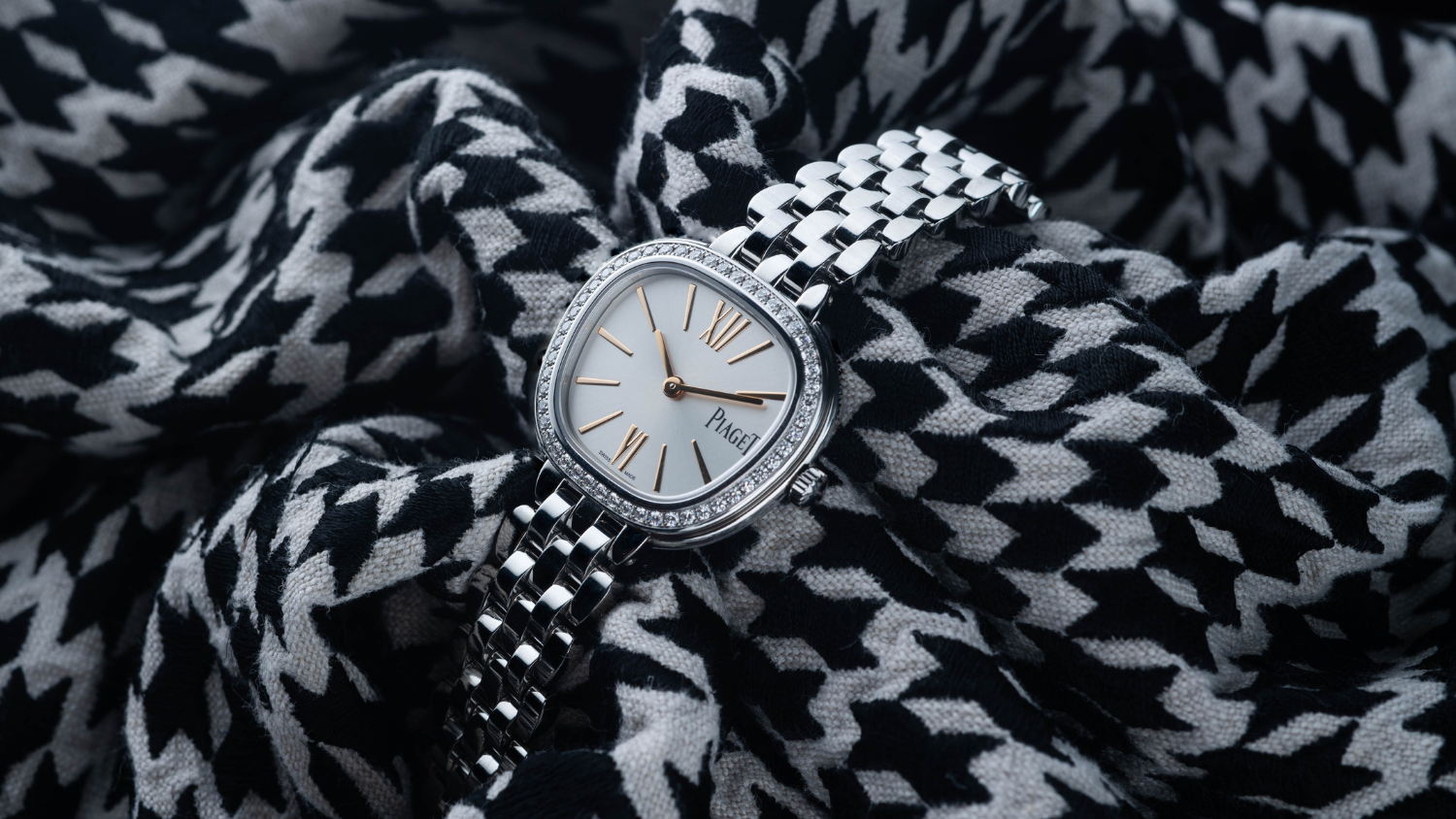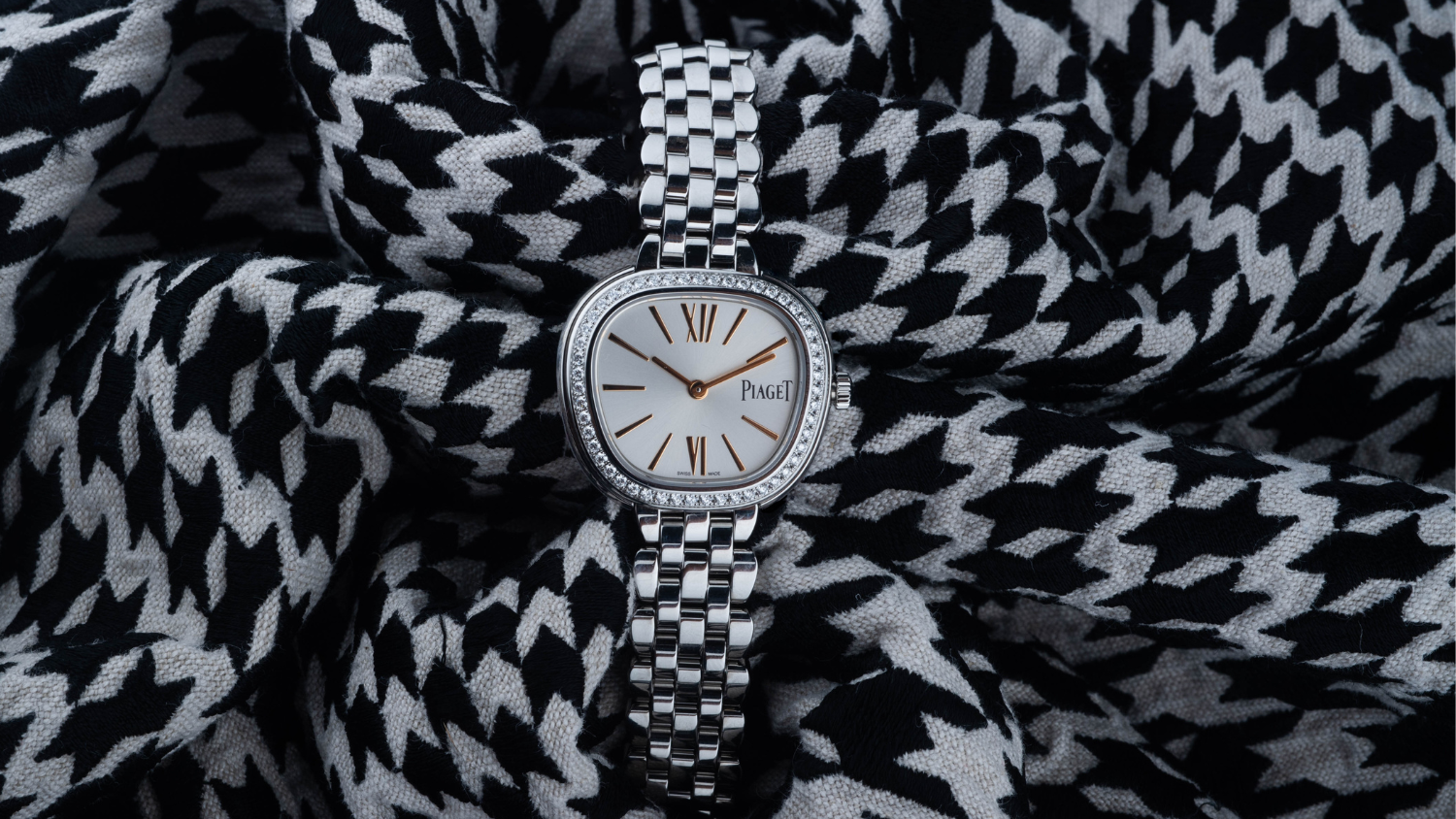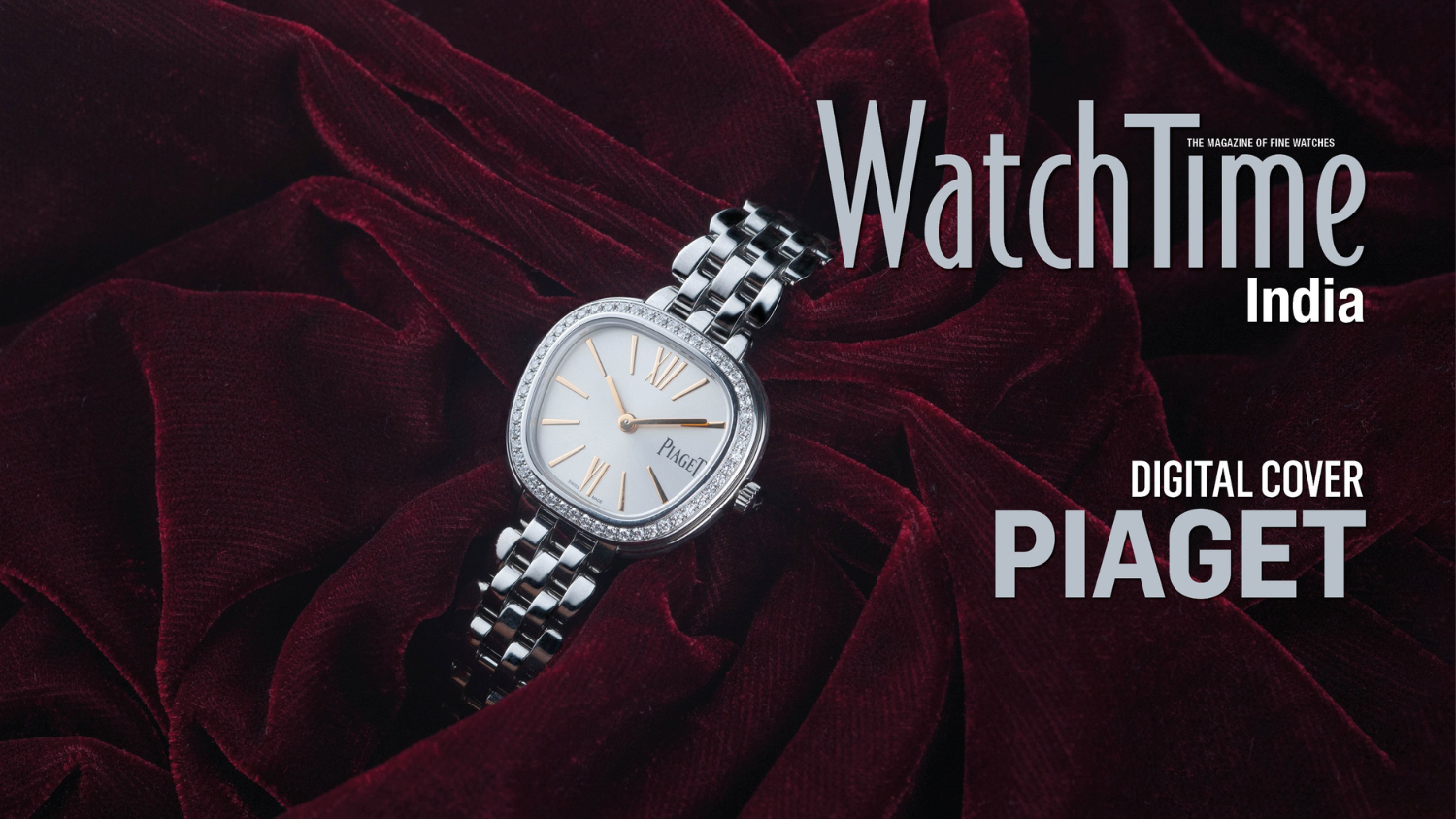Founded in 1874 in La Côte-aux-Fées, Switzerland, Georges-Édouard Piaget started his eponymous brand with a small set up on his farm. Beginning as a high precision movement and components maker, Piaget’s humble beginnings are a far cry from the high watchmaking and jewellery maison it is known as today. And our latest digital cover watch, the Piaget Sixtie, is proof.
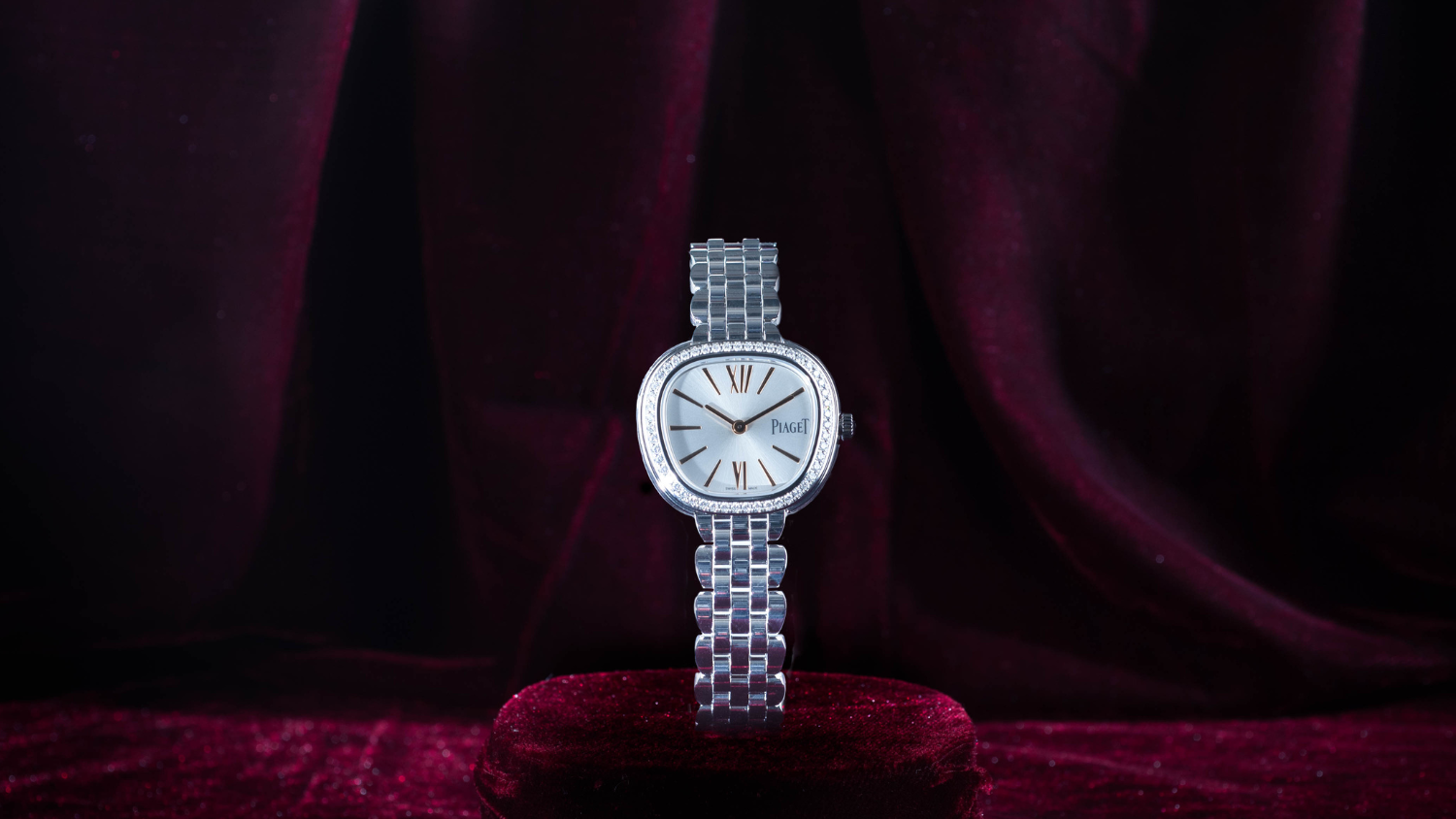 Our Digital Cover Watch, Piaget Sixtie Ref. G0A50300
Our Digital Cover Watch, Piaget Sixtie Ref. G0A50300This year, at Watches & Wonders Geneva, Piaget unveiled Sixtie with four timepieces - stainless steel with a diamond-set bezel (Ref. G0A50300, also our digital cover watch), two versions in rose gold, one with diamonds on the bezel (Ref. G0A50304) and another without (Ref. G0A50302); and one in a combination of rose gold and steel (Ref. G0A50301). The watches measure the same - 29 mm x 25.3 mm - in a distinct trapezoid shape that defines the line. The timepieces are 6.5 mm in thickness, thanks to the brand’s slim Calibre 57P quartz movement driving them.
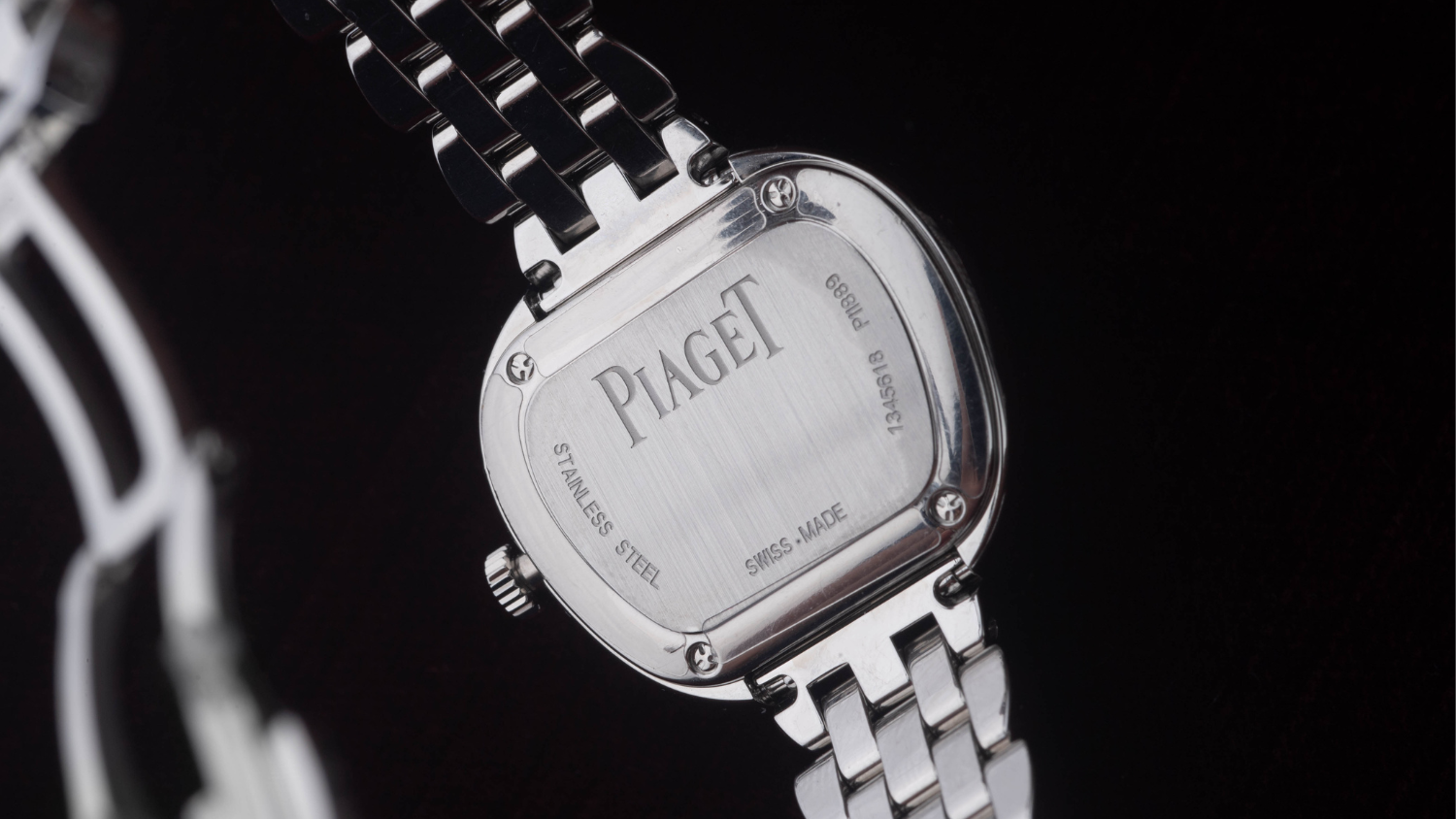 Piaget Sixtie features a closed caseback
Piaget Sixtie features a closed caseback
The Sixtie collection takes its name from the 1960s, a period which saw great creativity and innovation at the brand - in fact, the asymmetrical, trapeze-like shape of the line is a direct reference to the ‘Swinging Sautoirs’ from the 1969 21st Century collection. The five-step style bezel also has a precedent - the Piaget watch owned by American visual artist Andy Warhol and its stepped design takes after the Piaget 14101, a Beta 21 quartz watch, and the first one to feature chiselled lines.
 White sunray satin-brushed dial of the Piaget Sixtie
White sunray satin-brushed dial of the Piaget SixtieThe watches feature a white sunray, satin-brushed dial featuring slightly trapezoidal rose gold hour-markers and Roman numerals at 6 and 12 o’clock. The baton hands are in rose gold, and the Piaget logo rests at 3 o’clock. Minimalism is a cornerstone of these time-only watches, perhaps also the reason the makers abstained from a seconds hand.
 The dial featuring slightly trapezoidal rose gold hour-markers
The dial featuring slightly trapezoidal rose gold hour-markersFrom what we observed, the top bezel and case flank are wider than the equal-sized three middle gadroons, evident when seen from the top. Its bezel is set with 51 brilliant-cut diamonds (0.52 karats), the same as on the other diamond set variation.
The bracelet design is new as well, and goes a long way in giving the watches their jewellery-like aesthetic—the links of its highly polished five-row bracelet follow the shape of the case.
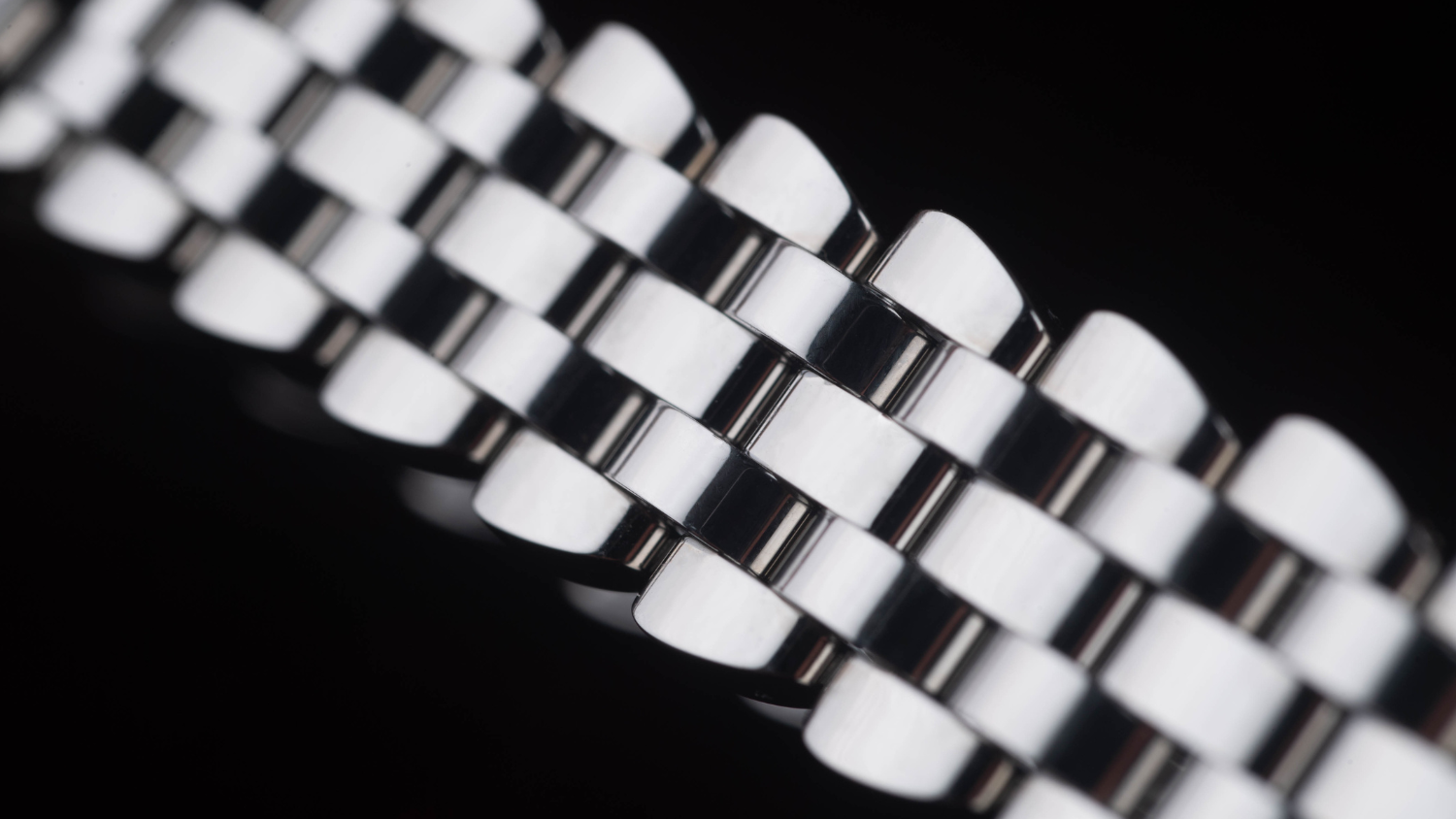 A highly polished five-row bracelet of the Piaget Sixtie
A highly polished five-row bracelet of the Piaget SixtieMade meticulously by combining 63 trapezoid links (each measuring 6 mm - 10 mm), the bracelet hugs the wrist ergonomically while a triple-folding push-button clasp fastens it to the wrist. There is a knurled crown with the brand’s initials engraved at the centre, and all the watches are water resistant up to 50 metres.
Golden Era
In 1969, Piaget launched its 21st Century collection of wristwatches, cuffs, and sautoirs designed by Swiss watch designer Jean-Claude Gueit, inspired by the Piaget family’s expression of free-spirit –“Do what has never been done before”. An instant hit, the designs were extravagant and ahead of their time. The line included shapes like oval, placed horizontally, vertically, and even at unexpected angles; rectangles of different proportions, squares, and trapezoids, carried in wristwatches, cuffs, and sautoirs. Continuing its love for shapes, the 1970s became an era when Piaget introduced watches in distinctive square, octagonal, hexagonal, and trapeze shapes. Over time, the trapezoidal shape stood out, and became a cult classic for its asymmetric design, appearing in different dials and metals (18K white gold and 18K yellow gold) . It’s that shape which is refreshed in the brand’s most recent women's collection Sixtie.
Sixtie Expands
Even within the short time since its launch, the Sixtie collection has already found popularity. In India, entrepreneur Mira Rajput Kapoor was seen wearing it for the opening of her retreat Dhun Wellness in Mumbai, and more recently actor Samantha Ruth Prabhu styled it with a beautiful red gown. Perhaps anticipating how it would be received, the brand recently unveiled two new models. The first is the 18-Karat rose gold iteration with a turquoise dial (Ref. G0A50305), which is also nominated in the ‘Ladies’ category in this year’s GPHG Awards, competing with Audemars Piguet’s Royal Oak Mini Frosted Gold Quartz, Gerald Genta’s Gentissima Oursin Fire Opal, Louis Vuitton’s Tambour Convergence platinum, Tiffany & Co.’s Bird on a Rock Legacy Tanzanite; and Voutilainen’s 28CG.
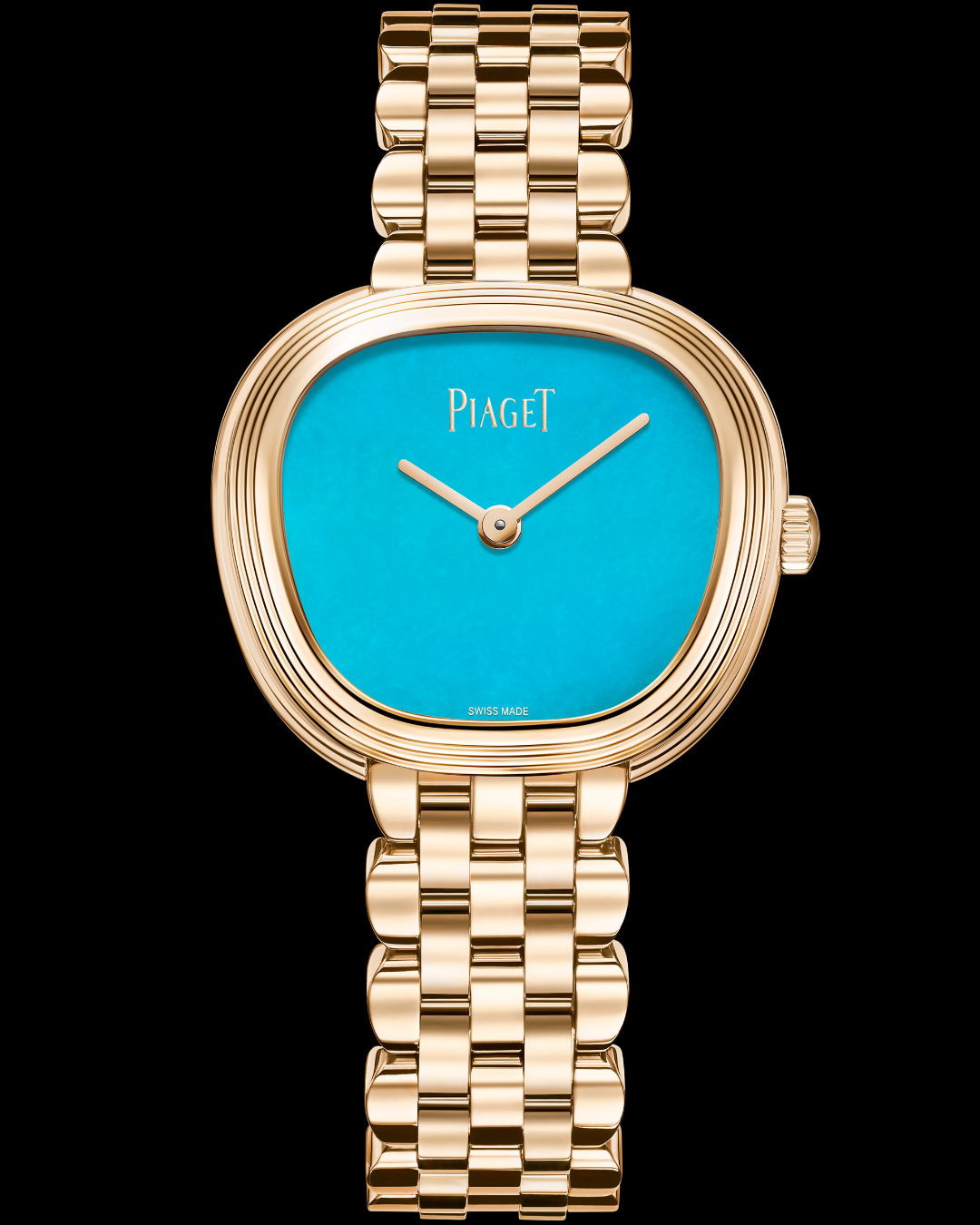 Piaget Sixtie with a turquoise dial (Ref. G0A50305)
Piaget Sixtie with a turquoise dial (Ref. G0A50305)
While the silhouette, movement, and integrated bracelet of the watch remain the same, the watch features a turquoise stone dial with just rose gold minute and hour hands and the Piaget logo, making it a minimal yet vibrant piece. The other model is Ref. G0A50303, an 18-Karat rose gold version with a diamond set bezel (51 brilliant-cut diamonds weighing 0.52-Karats) with an extra-decorative bracelet - the middle two links are semi-set with diamonds.
The Sixtie is undoubtedly carving a niche for itself amongst Piaget’s offerings. We spoke to CEO Benjamin Comar on what the new line represents for the brand.
 Benjamin Comar, CEO, Piaget
Benjamin Comar, CEO, Piaget
WTI: Piaget has a storied legacy in both watchmaking and high jewellery. How does the new Sixtie collection reflect that heritage?
Benjamin Comar: It was a challenge for us to launch a brand new jewellery watch collection since 2013 and the reboot of the Limelight Gala. You always fear it won’t be understood, find its place, be appreciated. The feedback proved us right, thankfully, but what made us believe in the Sixtie was the incredible coherence and relevance with the Piaget DNA. Brand new and yet, it already seemed like she was a natural part of this family portrait of watches. Our artistic director, Stephanie Sivriere, has been with us for more than 20 years - she knows the maison through and through. Here, she hasn’t just taken a trapeze shaped dial from the past, she has given it relevance strength and has added a lot of meaningful details.
WTI: “At Piaget, a timepiece is first and foremost a piece of jewellery,” said Yves Piaget. How does it translate to the current times?
BC: We have always kept this spirit alive. Some Limelight Gala watches are considered classic watches for us, part of the masterline. However, the bracelet is hand-engraved with the Decor Palace technique in the workshops, and the same gemsetters who set the High Jewellery watches will set the bezel with generous diamonds. We adorn it with the same care and the artisans and designers who work on jewellery, also work on watches, just like it was many decades ago when Piaget grew from watchmakers into jewellers.
WTI: Where is the Sixtie line positioned in the Piaget women’s watches universe, when compared to the Limelight, Polo, and Altiplano women’s?
BC: There has always been a certain fluidity at Piaget - men wearing ornamental stone dials and women wearing Andy Warhol or Altiplanos. Sixtie is very versatile, it’s the first non-set bezel we have for women and at the same time you can fall for a version with the bezel set, just like the Limelight Gala or the Piaget Polo 36mm. It’s down to your attitude, how you wear it, style it. At Piaget, even the extraordinary cuff watches are incredibly wearable and easy on the wrist.
WTI: The universe of women’s watches is expanding in every direction. Where would you want to steer Piaget in this universe?
BC: It is indeed, but Piaget has always been very versatile - the first Aura watch in diamonds was created in 1989 for a man. Andy Warhol was wearing a golden cuff watch in Tiger’s Eye. I would just wish that every Piaget customer keeps finding the creation that suits them, surprises them, and goes with all their endeavours.





